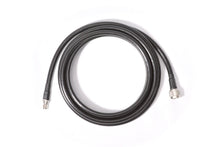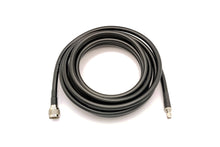Our X-400 coaxial cable is perfect for applications on the 868Mhz and 915Mhz bands. The ultra low attenuation of <0.193dB per metre between DC and 3GHz means that almost no signal is lost in the cable. The tough PE jacket resists UV and provides excellent durability in harsh environments.
This cable is a direct replacement for RG-8, LMR-400 (a trademark of Times Microwave), and other 0.400" / 10mm jacketed low-loss coaxial cables.
Please note this cable is very stiff, and intended for permanent installations. You will need appropriate cable support or clips.
Installation note: It's critical that all outdoor connectors are taped with self-amalgamating tape (not electrical tape)! Water will seep through screw threads over time, and will permeate your cable and antenna via the exposed connectors, causing performance to mysteriously drop some days or weeks after installation.
| Generic name | X-400 |
| Connector A | N male |
| Connector B | N male |
| Length | 3m or 5m |
| Insertion loss |
≤0.193dB per metre @ 868MHz;
≤0.132dB per metre @ 433MHz; |
| Impedance | 50 Ohm |
| Capacitance | 79pF +/- 2pF per metre |
|
|
0.82 |
| Conductor | Copper-clad aluminium, solid, 2.74mm |
| Shield | Aluminium foil + braiding |
| Dialectric isolation | >3000V |
| Dialectric | Foam PE |
| Jacket | PE |
| Working temperature | -40℃ to +85℃ |
| Minimum bend radius | 103mm |
| Diameter | 0.405" or 10.3mm |
- Please note that this cable is quite stiff, and should not be bent repeatedly or installed in a location where it can move (eg, unsecured and in the wind) as the central conductor will be damaged.
- Do not bend tighter than the outside of a frisbee (103mm is the minimum bend radius), or kink
- Secure cable to a solid object every 500mm, and wrap all connections in self-amalgamating tape.






